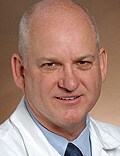 |
| Lily K. Jung Henson, MD |
The European approval of alemtuzumab (Lemtrada, Genzyme/Sanofi) means that there will soon be another new and exciting tool in the multiple sclerosis (MS) armamentarium. But how will this seemingly very effective agent fit in to current treatment?
Medscape Medical News asked several MS experts to give their views on this question, as well as how they use the various different agents that are currently available.
Alemtuzumab
is the fifth new and novel treatment to be introduced for MS in recent
years, following 3 oral products and the other monoclonal antibody,
natalizumab (Tysabri, Biogen/Elan). It is also currently under
consideration for approval by the US Food and Drug Administration (FDA),
with a decision expected as soon as next month.
Most patients with MS are still managed on the platform drugs — β-interferons and glatiramer (Copaxone,
Teva) — that are regarded as mildly effective with only mild adverse
effects. The new oral drugs are now becoming available and are perceived
as being somewhat more effective than the platform drugs, but with
greater adverse effect issues. Natalizumab and alemtuzumab are regarded
as much more effective than other therapies, but this comes at the price
of some serious averse effect concerns with both agents.
Most
experts polled said they view alemtuzumab as an alternative to
natalizumab in patients who are not responding to the first-line drugs.
Lily
K. Jung Henson, MD, Swedish Medical Center, Seattle, who participated
in one of the alemtuzumab phase 3 trials, says: "If a patient is doing
well on β-interferons, I would leave them alone. I would only change
their medications if they were failing. For me, the side-effect profile
of alemtuzumab will limit its use in patients with early disease.
Eva
Havrdova, MD, Charles University, Prague, Czech Republic, agrees. "I
would only use natalizumab or alemtuzumab in those patients who need
escalation of therapy because their disease is progressing. Many
patients have been stable on interferons for 10 to 15 years. So why
would you expose them to the side effects of these new drugs? "
Mark
Freedman, MD, University of Ottawa, Canada adds: "I use
interferon/Copaxone first; then fingolimod or possibly natalizumab. I
will keep alemtuzumab for more advanced cases or significant
breakthrough. A little breakthrough, fingolimod; a lot of breakthrough,
alemtuzumab. Why use a cannon when a pop gun will work?"
Dr. Eva Havrdova
|
Change in Strategy Occurring 1
But
Professor Alastair Compston, FRCP, Cambridge University, United
Kingdom, who has pioneered the development of alemtuzumab for MS, feels
differently. He believes treating patients aggressively early on is the
way to go.
"The
conventional conservative view would be to keep alemtuzumab for
second-line use where patients are failing on β-interferons/Copaxone or
those who present with very active disease, and that is understandable.
But I think it is the wrong approach."
Dr. Mark Freedman
|
He
says there is radical change in strategy occurring in MS. "In the past,
the culture has been to reserve the most effective agents until all
else has failed. But this carries with it the risk of waiting too long
and losing the window of opportunity. We are starting to realize that
when patients get to advanced stages it is too late, and that the time
to intervene with highly effective therapies is in the early stages. The
modern view of MS is becoming 'You have to nail it early'."
He
claims this has been recognized by the European Union (EU) in its
approval of alemtuzumab, which does not stipulate that it has to be used
as second-line treatment.
"The EU license says 'active
relapsing remitting MS.' This gives the physician enormous freedom to
decide how to use it, and includes the possibility of first-line use. In
doing this, the authorities have understood for the first time that the
dividend for treating MS reduces over time.
Dr. Alastair Compston
|
"The
closest drug to alemtuzumab is natalizumab," Professor Compston adds.
This is very much regarded as a second-line agent, indicated only for
patients with highly active disease defined by a specified number of
attacks or lesions. The European licensing authority did not go down
this route with alemtuzumab. It has taken on board the change of
thinking occurring in the MS field of hitting the disease hard in the
early stages."
Rebooting the Immune System
Professor
Compston was part of a duo who first came up with the idea of using
alemtuzumab, which was already available for leukemia, in MS. He
describes its action as "cleaning out and rebooting the immune system —
it depletes the body of T and B lymphocytes and allows the system to
repopulate with a new set of immune cells which are not defective."
He
points out that they first tested alemtuzumab in advanced MS with no
success. So they moved on to earlier-stage patients from 1999 onward and
found startling results. "In our series of patients we have found that
50% actually had improvement on disability scales with this drug. This
doesn't happen in MS. Results of the formal clinical trials have also
shown impressive reductions in disability, and more than 3000 patients
have now been treated worldwide."
The bad news is that the rebooting of the immune system appears to allow the development of some other autoimmune conditions.
"Everyone
has a few rogue immune cells which can cause various immune diseases,
but they are drowned out by the rest of the immune cells," Professor
Compston explains. "By clearing out the system, we seem to have removed
the brakes that have been controlling these rogue cells and they are
allowed to a get a grip. So we see the development of autoimmune
conditions — mainly thyroid disease — - in up to a third of patients."
Other
immune conditions that have been seen are Graves disease, idiopathic
thrombocytopenic purpura, and Goodpasture syndrome (a kidney disease),
but Professor Compston says all these conditions are detectable by
monitoring and are treatable in most patients.
Comprehensive Monitoring Needed
"We
have to be aware that there is a high possibility of these conditions
developing and monitor patients accordingly," he said. "Yes, that is a
nuisance. But I believe it is worth it for the benefits seen. I can see
that this will make some people cautious but the EU licensing authority
have got their heads beyond it and that is because the benefits are
considerable. "
Professor
Compston says there needs to be a 3-way contract between the
neurologist, the company, and the patient when using alemtuzumab.
"The
company needs to develop an effective monitoring system. The
neurologist has to be responsible and commit to regular monitoring of
the patient. This is not a case of just giving the drug and waving
goodbye," he added. "And the patient needs to understand the need to
comply with the monitoring."
Dr.
Jung Henson, however, believes the need for such monitoring is a major
challenge for alemtuzumab. "We will have to keep a close eye on the
patients to avoid complications, but this may be difficult. Even
high-risk patients may not come in to be seen regularly. And the way the
drug is dosed — 5-day treatment followed by 3 days 1 year later — will
mean patients do not have to come in for treatment. So there is a risk
that they will get complacent and not have their regular checks and
blood tests. That is the major concern."
She
also points out that it is not known for how long patients will need to
be monitored. "So far clinical trials have included a 2-year treatment
phase including the first 2 dosing periods, then an additional 2- to
3-year extension phase with the option of a third dose if there is
disease activity, so the maximum time patients have been followed in a
clinical trial is about 4 to 5 years. We don't how long the effects of
the drug or the side effects last."
That
is also a big concern for Dr. Havrdova. "My issue with alemtuzumab is
that no one knows what happens after 2 or 3 years. We already see 20% of
patients need a third dose in the third year. That is not an
insignificant amount. What happens in the fourth, fifth, tenth year?
There is no data on that yet. And what do we do when it stops working?"
"Maybe
a few pioneer people will use it early on. But not everyone accepts
that we need aggressive drugs in early disease," Dr. Havrdova adds. She
suggests that a better strategy would be to monitor patients on the
platform drugs for disease activity and identify those patients who are
endangered.
"We
use quantitative MRI in our center — we can pick more sensitive
measures of disease progression. Then we can treat those with activity
with the more aggressive treatments. This is better than giving everyone
an aggressive drug with side effect issues early on."
She
also highlighted that price negotiations for alemtuzumab will be very
tricky. "It has been available at a cheap price for leukemia but they
are now re-pricing for MS, so it will be expensive. There will be a lot
of arguments on this going on at the moment between the company, the
government and insurance companies. It could take time to sort out."
Another
expert who believes in the "hit it hard early" strategy is Timothy
Vollmer, MD, University of Colorado School of Medicine, Denver. "The
therapeutic goals are changing," he told Medscape Medical News. "We are moving from slowing the disease down to inducing full remission."
Dr. Timothy Vollmer
|
Dr.
Vollmer points out that most disease activity is subclinical.
"Physicians can't tell by looking a patient what is happening in their
brain. Even an MRI once a year is inadequate. You need high-resolution
3D volumetric scans to see brain atrophy. This is not routinely done. If
we allow the management to be governed by symptoms we are trading off
function in later life. The goal should be to preserve function now so
as to reduce lifelong disability. Disability has been correlated with
reduced brain volume on MRI, so we can rank the drugs on their effect on
inflammation and brain atrophy.
"The
trouble with keeping the powerful drugs for advanced disease is that
you need some brain reserve left to show improvement. That is why I
think we need to treat early to maximize benefit with these drugs," Dr.
Vollmer said. "In appropriately selected patients they can be just as
safe as interferons, but much more effective."
"We
are more aggressive at our center, but we are using the data as it has
been published to make decisions," he adds. "I think this is the way it
will go in the future. Other experts worldwide think similarly. However,
the vast majority of general neurologists are not at this level. We are
in the relatively unusual position of having been involved in all the
studies. I've seen all the data at investigator meetings — more than
that which has been published — so I have more confidence than most."
However,
while Dr. Vollmer believes alemtuzumab will be an important therapy, at
present he says he would reserve it for more aggressive disease,
preferring to use natalizumab or one of the antiCD20 antibodies, not
approved yet but available for individual patients in experimental
protocols, in earlier patients.
He
says all these agents are highly effective, showing a 70% to 80%
reduction in relapse rate and a 90% reduction in disease activity, with
full remission in some patients. But the monitoring for autoimmune
conditions puts him off using alemtuzumab.
Natalizumab Limited by PML
Natalizumab
has been available already for a few years, but its use is limited
because of the potentially fatal adverse effect of PML. As of March
2013, there had been 343 confirmed cases of PML, with a 23% mortality
rate, among more than 112,000 patients taking the drug. But because it
has been considered the most highly effective drug for MS, it has
remained on the market and is used as a second-line agent for patients
needing an escalation of therapy.
Now with alemtuzumab becoming available, natalizumab will have some serious competition.
Dr.
Freedman is particularly concerned about the risk for PML with
natalizumab. "The risk of PML is about 1 in 500," he said. "Some people
accept that risk with an 'it won't happen to me,' head-in-the-sand
philosophy. But if there was a 1 in 500 chance of winning the lottery we
would all be out there grabbing tickets like there's no tomorrow."
But
Dr. Vollmer points out that the risk for PML is far less if patients
are selected carefully. He points out that 45% of patients don't carry
the JC virus (JCV) that causes PML and can be identified by antibody
tests. Because there is a small false-negative rate, 2 tests are
recommended at the start of treatment then every 6 months.
"If
the patient is JCV-negative, then natalizumab is well tolerated," he
said. "There has been one case of PML in a JCV-negative patient but this
patient only had one test — they weren't rechecked. If the antibody
test is negative every 6 months the risk is miniscule — about 1 in
10,000."
Natalizumab
is generally recommended as a second-line agent, but first-line use has
not been ruled out in the United States, he adds. "I do use it
first-line for JCV antibody–negative patients."
Dr.
Havrdova says that in Europe, natalizumab is considered a second-line
treatment, and she will use alemtuzumab as an alternative to natalizumab
in patients who are JCV positive. "I would use natalizumab first for
JCV-negative patients, because it's been around longer, is effective and
well tolerated and easy to give — just 1 injection per month. Patients
want it, but I would rather they have an antibody test every 3 months
for greater awareness of PML risk."
She
notes that some patients receiving natalizumab don't want to come off
it even when they subsequently test positive for JCV. "Sometimes we let
them stay on it and do regular MRIs to check for PML in the brain. But
these patients will soon be able to have alemtuzumab instead."
But
Dr. Freedman is not convinced by the antibody tests. "We are being told
that if a patient tests negative for JCV then they won't get PML. But
this is still hypothesis. Yes, there are new ways of risk stratification
for PML, but I still don't like having my hands tied with the
possibility of my patient getting something I can't treat.
"The
idea of saying to a patient: 'OK you've got PML. We've got to stop the
drug and hope you don't die' is not a satisfactory outcome," he said. "I
think we have to question whether 2 to 3 years of feeling good is worth
taking a risk with the rest of your life."
Dr.
Jung Henson feels similarly. "PML with natalizumab is a big deal. The
autoimmune diseases with alemtuzumab can be relatively easily treated so
are not such a big deal."
Dr.
Freedman also points out that natalizumab does not tackle the cause of
the disease. "It keeps T cells out of the [central nervous system], but
it is not actively attacking the disease. So when the drug is stopped,
rebound is often seen."
Dr.
Freedman is much more impressed with alemtuzumab. "It is a very
effective agent. Its results are an order of magnitude above existing
data with other drugs seen to date. It is the only one that has proven
superiority over high-dose interferon. Alemtuzumab has shown the same
greater effect over interferon than other drugs have shown over placebo.
"Yes,
it does have issues as you would expect from such an effective agent —
but nothing that can't be dealt with by monitoring and that is
reassuring," he added. "It is exciting that alemtuzumab got such a nice
embrace by the European authorities. I'm hoping Canada will do the
same."
But
Dr. Freedman still sees alemtuzumab being used primarily in more
advanced disease. "It's a big bang for those with advanced disease.
Induction therapy for these patients has finally arrived." He says he
will also use it in patients who present with an untoward amount of
disease at the start. "We've realized the need to hit these patients
hard straight away."
Where Do the Oral Therapies Fit in?
The oral drugs are seen as an intermediate option between the interferons/Copaxone and monoclonal antibodies.
"Most
of the oral drugs do seem to be more effective than the platform drugs
but as they have mostly been tested against placebo they have not been
proven to be superior," Dr. Jung Henson says.
She
thinks fingolimod is a good first option for patients in whom platform
drugs are failing or those who don't want an injection. "The main issues
with this drug are that it must be avoided in patients with vascular
disease and can cause bradycardia especially after first dose, so there
is a requirement for monitoring for 6 hours after the first dose just in
case the patient goes into heart block. This puts a lot of clinicians
off as they haven't got the staff or resources to do that. But larger
centers can do it. We use it a lot."
Dr.
Havrdova notes that fingolimod is the only oral treatment available so
far in Europe, although teriflunomide was also recently approved.
Fingolimod is not licensed for first-line use in Europe, "so I consider
it for patients with active disease on interferons/Copaxone."
She
says BG-12, already approved in the United States, has been delayed
because of issues about cost in the EU. "Again it is related to an
existing drug, Fumaderm, marketed for psoriasis. And they want to charge a lot more for it for MS."
Dr.
Freedman also highlighted this issue, saying, "I think the Europeans
are questioning the similarity of BG-12 to Fumaderm. And what is the
point of releasing a drug that costs € 25,000 a year when you can get a
chemist to make it for pennies?" He also points out that Fumaderm has
been linked to a few cases of PML, "which raises a hypothetical concern
for me about BG-12."
Dr.
Havrdova notes that in her view, teriflunomide doesn't seem any more
effective than injectables and has worse adverse effect issues.
"It
is contraindicated in pregnancy and two thirds of patients are women of
child-bearing age, so I won't use this drug much," Dr. Havrdova says.
Dr. Jung Henson also points out that it has the potential to cause liver
toxicity and can cause hair thinning; "that puts a lot of people off,
especially women." But Dr. Freedman likes teriflunomide. "It is not
licensed yet in Canada, but it looks to have similar efficacy to the
interferons and is easier to take."
Dr.
Vollmer agrees that BG-12 and fingolimod have the better data of the
oral therapies. "All 3 oral agents are approved in US as first line
agents. I do switch patients stable on interferon to these new drugs as I
think the data suggest they are better. BG-12 was better than Copaxone.
Fingolimod was better than low-dose interferon."
What to Offer New Patients?
Dr.
Vollmer says for new patients, if they are JCV negative he would offer
them natalizumab. If they are JCV positive, he would evaluate their
comorbid conditions and, depending on these, give fingolimod or BG-12.
If they have comorbid conditions that prevent the use of either of
these, then he would use Copaxone or interferon-β.
"So
I am really not using Copaxone/interferons much anymore," he said. "I
have switched most of my patients to one of the newer agents."



